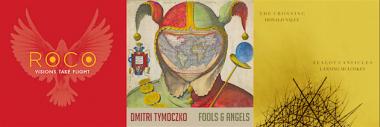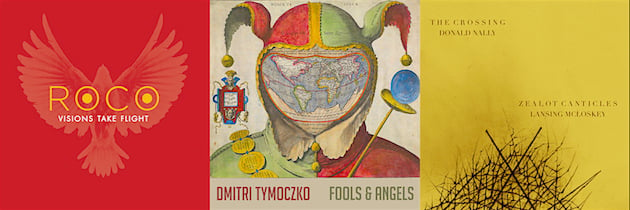
Debates about new music have always focused mainly on styles that have caught listeners off guard. The high energy primitivism of early Stravinsky and Bartók, for example, struck some early listeners as too brutal for the concert hall, just as those who disliked (or still dislike) serialism find it ugly and unmoored, and those who disdain minimalism hear it as simplistic, and listeners puzzled by indie classical regard it as a species of pop music.
It is only natural that the fiercest arguments are engendered by music that sets aside the old rules and looks in new directions: that there are always those who react to avant-gardes of all kinds with suspicion, as either puzzling or fraudulent, even when the music they prefer was once greeted similarly.
But through it all, there have also been composers who stood aside from the aesthetic battles, because they prefer evolution to revolution and cherish what was once thought of as the “common practice,” or musical language rooted in tonality, as it has developed from the 17th century onward. Usually, we hear their music, decide whether it more closely resembles the streamlined style of the Classical or the more broad-boned Romantic approach (or occasionally, earlier styles), and then slap a “neo-” label onto whichever conclusion we’ve reached.
But the best of this music is almost always more than a prefix suggests. Composers of neoclassical and neo-Romantic works may prize aspects of 18th- and 19th-century composition — typically, the structural and syntactical coherence that makes it accessible to listeners who prize such traditional values — but their music invariably embraces contemporary elements that keep it from being mistaken for Mozart or Mahler. It’s no longer unusual to hear 12-tone rows or a stretch of minimalist ostinato in music of this kind. It deserves better than to be excluded from discussions of contemporary style or dismissed as an easy or antiquated approach to composition.
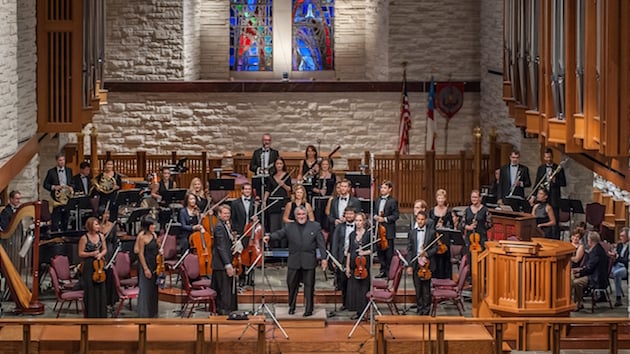
Nor is it about to vanish, as several new releases offering works by composers born in the 1960s, 1970s and 1980s, make clear. River Oaks Chamber Orchestra (ROCO), a flexible chamber orchestra based in Houston, has devoted its debut recording, Visions Take Flight (Innova, 2 CDs) to six recent neo-Romantic scores. They are all steeped in tonality and built, at least partially, on traditional structural models, but they are also different enough that their composers’ thumbprints shine through.
 Karim Al-Zand, born in 1970, based his three-movement Visions from Another World (2008) on engravings by the early 19th-century, proto-Surrealist illustrator J.J. Grandville, which explains his overtly pictorial approach. In the outer movements, “Ronde Fantastique” and “The Spinning Ballerina,” he capitalizes on the kinetic imagery suggested by the engravings (the first being a dance of fish and frogs, leaping out of the water to catch dragonflies). His musical models sound less like 19th-century Europeans than mid-20th-century Americans like Samuel Barber, Leonard Bernstein, Vincent Persichetti, or Irving Fine, yet there is also an almost minimalist repetitive energy and syncopation in “Ronde Fantastique.”
Karim Al-Zand, born in 1970, based his three-movement Visions from Another World (2008) on engravings by the early 19th-century, proto-Surrealist illustrator J.J. Grandville, which explains his overtly pictorial approach. In the outer movements, “Ronde Fantastique” and “The Spinning Ballerina,” he capitalizes on the kinetic imagery suggested by the engravings (the first being a dance of fish and frogs, leaping out of the water to catch dragonflies). His musical models sound less like 19th-century Europeans than mid-20th-century Americans like Samuel Barber, Leonard Bernstein, Vincent Persichetti, or Irving Fine, yet there is also an almost minimalist repetitive energy and syncopation in “Ronde Fantastique.”
The middle movement, “Funeral Cortège of the Silkworm,” is unabashedly pictorial, with distant brass and subdued strings setting the scene, and distinct instrumentation and harmonies representing the groups of mourners — clarinets in thirds and sixths for the ants, bassoons in seconds and sevenths for the caterpillars, and so on. It may have its antique aspects, and no-one would mistake it for cutting-edge composition. But it’s a fun piece, and it shows Al-Zand to have mastered his resources.
Much the same can be said of Anthony DiLorenzo, who was born in 1967 and has two works in this set, Jabberwocky (2014) and Anthem of Hope: Houston Strong (2017), the latter a paean to ROCO’s hometown, commissioned by the group in the aftermath of Hurricane Harvey. DiLorenzo makes his feelings about style clear in the very first sentence of his program note: “I really don’t want the audience to have to take out a manual to listen to my music,” he writes, going on to report that, as a child, he was obsessed with film music.
That aspect of his musical psyche is evident from the moment Jabberwocky begins, with dreamy pitched percussion, graceful wind writing, and thoroughly picturesque themes, often couched in harmonies that evoke early 20th-century French scoring. Dream of Hope is less durable, as occasional works often are. Innocent in spirit and with a thoroughly cinematic sweep, it flirts with mawkishness too often for my taste. But then, it lasts less than five minutes, and you can’t fault the ensemble for commissioning what is essentially a sigh of relief, however saccharine, in the aftermath of a hurricane that, among its other costs (107 deaths and $125 billion in damage) forced ROCO to postpone the recording sessions for this collection by eight months.
The two DiLorenzo works are separated by a Concerto for Chamber Orchestra (2016) by Marcus Maroney, born in 1976. Maroney owns up to having both Bartók’s Concerto for Orchestra and the Sibelius Symphony No. 5 in mind when he was composing, but those influences are pretty well disguised in all but the tense, dark, occasionally angular final movement, which channels both composers as well as Shostakovich. The first two movements, though, are lighter in spirit, with Impressionistic wind writing catching the attention in the first, and an elegant minuet serving as the basis for an inventive variation set as a surprising central movement, in which Maroney ultimately chafes against the format (both the dance rhythm and the neoclassical restraint.)
Derek Bermel, born in 1967, is the best-known composer of the group, and contributed one of the set’s strongest works, Murmurations (2015). Scored for string orchestra, the three-movement work was inspired by a similarity Bermel sees between the kind of interplay typical in string orchestra pieces, and flocks of birds swirling in the sky. Its outer movements, “Gathering Near Gretna Green” and “Swarming Rome,” revel in the medium’s fluidity, with swirling, sometimes turbulent figures, dynamic swells and tactile chordal figures all creating an underlying current of dramatic tension and resolution. But Bermel’s models are clearest in the slow central movement, “Soaring over Algiers,” which alternates between the kind of intricacy you hear in Tchaikovsky’s Serenade for Strings and the melancholy chordal repetition that suffuses Glass’s Satyagraha.
Rivaling the Bermel as the set’s most striking work is Teen Murti (2013) by Reena Esmail, the youngest composer here. Esmail was born in Chicago in 1983, of Indian descent, and has given her work a Hindi title meaning “Three Statues,” a reference to both the New Delhi residence of Jawaharlal Nehru, India’s first prime minister, and the sculpture that stands outside it. Esmail has scored the work for Western instruments, and parts of the work evoke a 1950s-ish orchestral sound, complete with lugubrious cello melodies and brisk, vital ensemble writing. But she also draws on melodic and rhythmic elements of Hindustani music, which she approximates with glissandi, pizzicato, and other techniques. Much of the work’s charm lies in the ease with which she moves between these styles, particularly in the work’s final bars, which are thoroughly Western but for a brief, final raga allusion.
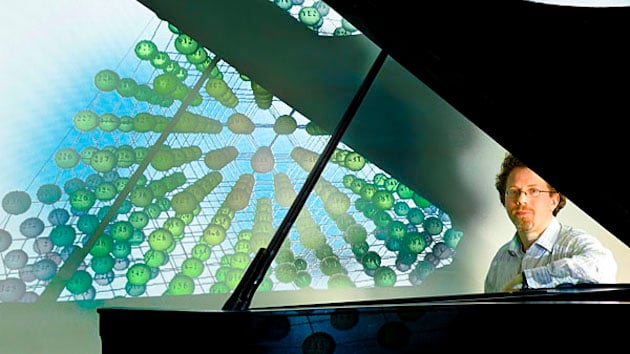
Compared with the works on ROCO’s collection — and, for that matter, heard on their own without reference to other recent pieces — the four scores on Dmitri Tymoczko’s Fools & Angels (Panoramic/New Focus) sound radical mainly because Tymoczko’s sound world embraces chaos in brief stretches, and his texts are consistently pointed and seemingly current, even when they are drawn from time-honored sources. Yet beneath Tymoczko’s idiosyncratic surfaces, you find levels of traditional structure, melodic shape, and orchestrational acuity that keeps the music accessible and gripping.
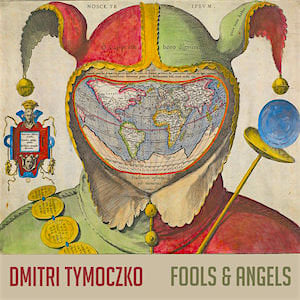 Tymoczko, born in 1969, has enlisted a starry ensemble (in new-music terms) for the project, with Jason Treuting from Sō Percussion and members of Roomful of Teeth and Newspeak among the performers. The title work, a five-movement setting of poetry by Allen Ginsberg and Jeff Dolven composed in 2006, begins as a cacophonous explosion, and maintains a veneer of being out of control, or just past the edge of decorum. In two of the three Ginsberg settings, “Fie my fum” and “Bop Lyrics,” Tymoczko emphasizes Ginsberg’s rhythmic drive, adding other elements as well — jazz figures, prominent electric guitar, and atonal keyboard bursts — in the latter. The last of the Ginsberg pieces, “Who,” takes a more mysterious tack, with slithering, bird-like sounds, jangling percussion, and a mysteriously hazy backdrop, against which the vocal quartet (Anne Hege, Neil Farrell, Melissa Hughes, and Gabriel Crouch) offers a pointillistic, melodically wide-ranging reading of the heady poem, which puts forth Ginsberg’s notion that the universe is a “manifestation of One Mind.”
Tymoczko, born in 1969, has enlisted a starry ensemble (in new-music terms) for the project, with Jason Treuting from Sō Percussion and members of Roomful of Teeth and Newspeak among the performers. The title work, a five-movement setting of poetry by Allen Ginsberg and Jeff Dolven composed in 2006, begins as a cacophonous explosion, and maintains a veneer of being out of control, or just past the edge of decorum. In two of the three Ginsberg settings, “Fie my fum” and “Bop Lyrics,” Tymoczko emphasizes Ginsberg’s rhythmic drive, adding other elements as well — jazz figures, prominent electric guitar, and atonal keyboard bursts — in the latter. The last of the Ginsberg pieces, “Who,” takes a more mysterious tack, with slithering, bird-like sounds, jangling percussion, and a mysteriously hazy backdrop, against which the vocal quartet (Anne Hege, Neil Farrell, Melissa Hughes, and Gabriel Crouch) offers a pointillistic, melodically wide-ranging reading of the heady poem, which puts forth Ginsberg’s notion that the universe is a “manifestation of One Mind.”
The Dolven settings, “Strawberries and Cream” and “The Dressing Room,” are more freewheeling, with speaking voices and percussive sounds set against amorphous ensemble textures, beautifully etched vocalise passages, and lightly dissonant choral settings. Together, the Ginsberg and Dolven movements offset each other as parts of a wildly varied, yet strangely coherent whole.
Sheila63 (2013), the disc’s second and most memorable work, is an eight movement, partly comic, partly dystopian look at artificial intelligence, with instrumental interludes interspersed among the five vocal settings (the text is by Dexter Palmer). The attractions of Tymoczko’s vocal writing in Fools & Angels are magnified here: both its vocalise sections and the chordal writing are more expansive, and as performed here by Martha Cliver, Melissa Hughes, and the Pulitzer-winning composer and singer Caroline Shaw, the text comes through with consistent clarity. And the Illinois Modern Ensemble moves easily through the constantly shifting textures, deftly juggling the undercurrents of menace and quirkiness.
In Four Dreams (2004), the texts, by Tymoczko and Christian Bök, are spoken rather than sung (the authors are the narrators), with a spare instrumental trio — the saxophonist Jonathan Sanford, the pianist Jade Simmons, and the percussionist David Skidmore — weaving a colorful fabric around them. And the closing work, Let the Bodies Hit The Floor (2008) has Melissa Hughes singing a text about war, compiled from writings by Siegfried Sassoon, Robert Frost, Jack Hitt, Rob Miller, and Tymoczko, along with fragments from traditional songs. The setting is rich in irony: even where the text imagery is harrowing, Tymoczko’s vocal writing is as sweet, shapely, and languid as a child’s song. It is the backdrop — overlaid speaking voices (the authors Hitt and Miller), shimmering keyboard textures, assertive electric guitar figures, abrasive percussion, rhythmically jagged passages — that provides the sense of terror that drives the score.
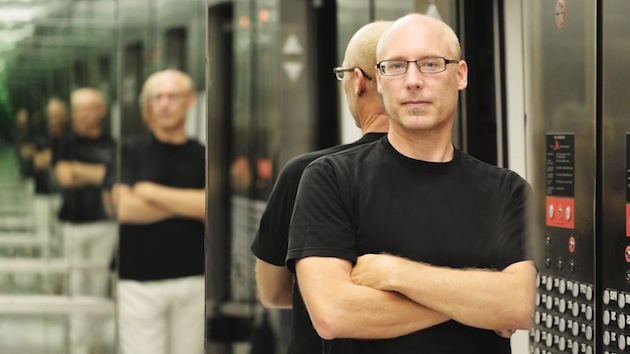
Using musical irony to excoriate noxious ideas seems to be in the air just now. Lansing McLoskey, born in 1964, composed Zealot Canticles (Innova) for the excellent new-music choir, The Crossing, as a response to religious fanaticism of every stripe. For his text, McLoskey drew on the powerful work of the Nigerian poet Wole Soyinka — principally his Twelve Canticles for a Zealot (2002), but also other poems and excerpts from speeches.
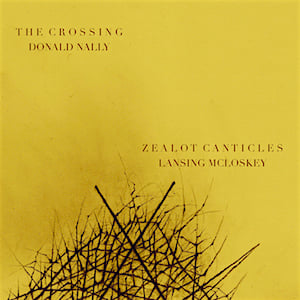 But as he was working on the piece, which he completed in 2017, he realized that the dangers of fanaticism are not solely those engendered by fundamentalist readings of religious texts. “We only have to turn on the television to see how small the step can be from self-righteousness to political/social oppression or roadside bombs,” he wrote in his program note, adding that he composed the work “during the most distressing U.S. presidential campaign in modern history, when every day we were faced with words of divisiveness, demeaning, mocking, and degrading ‘the other,’ and images of our fellow citizens, red-faced with both rage and glee, shouting for the removal — even the killing — of those of a different faith or ethnicity, while openly waving racist banners.”
But as he was working on the piece, which he completed in 2017, he realized that the dangers of fanaticism are not solely those engendered by fundamentalist readings of religious texts. “We only have to turn on the television to see how small the step can be from self-righteousness to political/social oppression or roadside bombs,” he wrote in his program note, adding that he composed the work “during the most distressing U.S. presidential campaign in modern history, when every day we were faced with words of divisiveness, demeaning, mocking, and degrading ‘the other,’ and images of our fellow citizens, red-faced with both rage and glee, shouting for the removal — even the killing — of those of a different faith or ethnicity, while openly waving racist banners.”
The text McLoskey assembled examines, challenges, and satirizes fanaticism, but also looks at more innocuous beliefs, filtered through Soyinka’s experience of having grown up in an open-minded Christian parsonage, but subsequently having lost his own faith. And though he does not deal specifically with the election or its outcome, the set’s 20th and final movement, “On Fire Today,” uses excerpts from one of Soyinka’s Canticles and part of a speech to argue that “the camouflage of power,” whether secular or religious, must be ripped away “so that the real Contender – the latest, smirking, unctuous face of Power in whatever guise, is exposed and neutralized.”
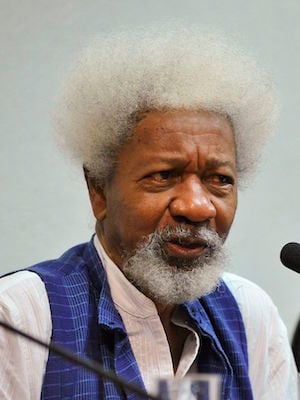
Zealot Canticles is a tough piece, but McLoskey’s setting — uncompromisingly sober, richly harmonized, and full of irresistible melodic turns, with dramatic solo passages that occasionally transform general observations into personal proclamations — keeps you focused on Soyinka’s rich, thought-provoking text.
It’s not that the music is prettified, or tamed. McLoskey’s lines can be angular, and his harmonies embrace clashes as well as simple consonance, fury as well as reflection. At times, particularly in instrumental passages, the music embodies a searing anger; yet there are also sublime, almost mystical passages for solo clarinet (in “Seek havens of peace” and “On Fire Today,” for example) that seem a clear homage to Messiaen’s Quartet for the End of Time.
McLoskey moves easily through the styles of different eras, sometimes beginning a passage with harmonies, rhythms, and polyphony that would not have been out of place in the early Renaissance, but quickly moving toward denser dissonances and more complex layers of counterpoint, all mirroring the changing emotional temperature of the text.
He uses simplicity just as effectively. For example, in “I Am Right, You Are Dead” — a slow, rhythmically bland, gently angular baritone setting of two repeating lines of poetry (the title and a variant) — he uses a detached, spare style to imply an unstated backstory about indoctrination and its dangerous yield.
The Crossing and the accompanying quintet, led by Donald Nally, give the work a beautifully sung and vividly played performance that fully taps its power and cautionary horror. Uncomfortable as Zealot Canticles sometimes is, it is so compelling that you want to keep returning to it. And. perhaps in light of this, some of the Tymoczko pieces, as well as recent scores by Du Yun, Huang Ruo, Ted Hearne, Laurie Anderson, and many others, we can look forward to a time — perhaps 2019 — when people stop asking what classical music can do to make itself relevant.

